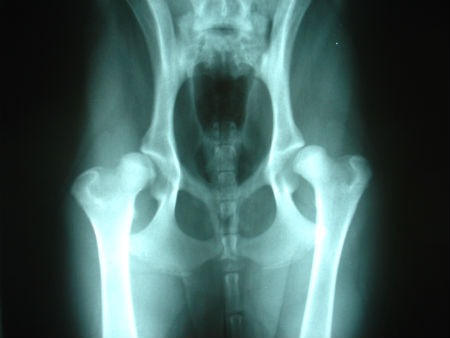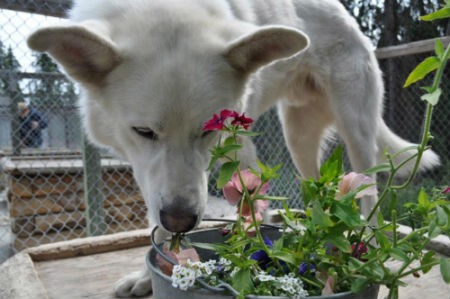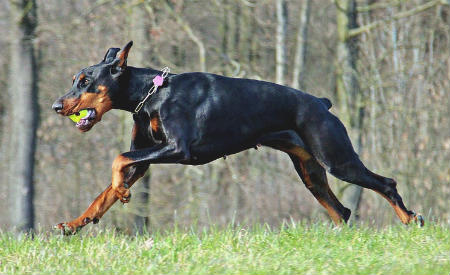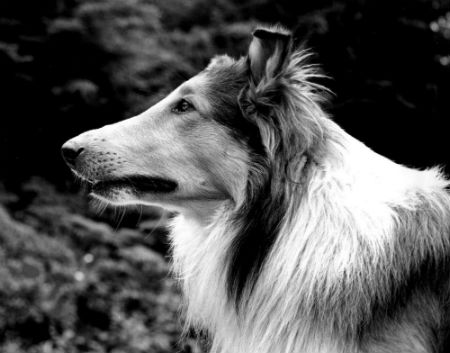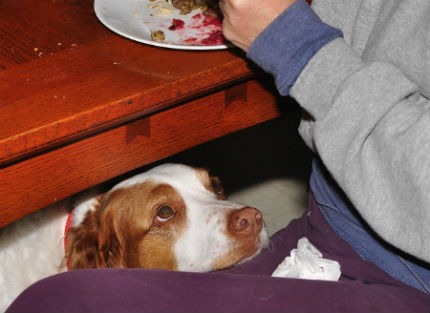Do you like energetic and intelligent dogs? Do you want a small pet but with great behavior? Do you need an outdoor activities partner? If you identify with these characteristics, the Bedlington Terrier It can be that friend you are looking for.
Size: Medium.
Weight: Between 7 and 10kg.
Hair type: Wavy and similar to the wool of the sheep.
Character: Intelligent, affectionate, energetic.
Health: Healthy depending on their care.
Life expectancy: Between 12 and 14 years.
It is one of the oldest and most favorite races in Britain. His living, intelligent and very attentive behavior made a very quoted animal for different activities and so far has not been different. The recognition that this dog has won in society is undeniable, and not only for having a striking character, but also because of its physical appearance that attracts all eyes. A particular aspect that combines sweetness, elegance and delicacy abroad, with outgoing, dynamic and very active behavior. Do you want to learn more about this breed? Its origin, temperament, physical characteristics, education, the care you need and much more, we will describe it in the following article. Do not stop reading this important information and discover everything you need to know before making this specimen part of your home.
Origin of Bedlington Terrier
Although there are no precise records of the first appearance of this friend, it is known that the first specimens of this breed began to be present around the 18th century, in the mid -80 It originated, and went north of England, practically on the border with Scotland, known as Northumberland. Within this place, in a town called Bedlington, these canines were seen for the first time. However, at that time they were known as Rothbury Terrier. Being around 1825, when it begins to be called by its current name.
The Bedlington Terrier, as is currently known, was influenced by the crossing of three races, of which he inherited an aspect that characterizes him. For example: of the caniche, its wavy fur, similar to the wool of the sheep. Then we find the WHIPPETS, of those who inherited its morphological characteristics and agility. Finally Dandie Dinmont Terriers. In principle, these dogs were used by the inhabitants of the town for the protection of their mines, within which their main function was to hunt rats and other rodents. Some time later, observing its valuable hunting skills, it began to be used in the capture of other animals such as foxes and midwives. His great skill allowed the acceptance of Bedlington inhabitants quickly. This made a century after its appearance, the Bedlington Terrier club was born in England, and later in 1967, the American Kennel Club would officially be recognized the race, publishing the standard. At present, this breed has not diminished its popularity, however, in addition to activities such as hunting, many specimens have been positively accepted as pets, performing a great role, as they are affectionate, attentive and playful.
Bedlington Terrier physical appearance
If there is something that attracts people's attention towards this dog, it is undoubtedly their physical appearance. This, because its similarity with a lamb is really impressive and also unmistakable to the presence of other races. In fact, it is not surprising that it can be confused with one, especially because of its lanudo fur. Let's look at some of the most outstanding physical characteristics of this race.
Contexture
Bedlington Terrier is presented as a dog with a muscular anatomy, well formed. However, it is not a rough dog, on the contrary, it becomes more delicate. This, like his spongy and wavy fur, has caused him to be confused with a sheep. Their legs are muscular, highlighting more posterior members, which seem to be more formed than the previous ones. However, both are elongated and strong. Which provides great agility when moving.
Size and size
This race is medium -sized. However, its height can vary depending on sex. Males can reach between 41 and 43 centimeters, while females can measure between 38 and 41 centimeters. As for weight, the sex of the race does not influence at all. Both the male and the female reach a weight that goes from 7 to 10 kilograms.
Head
A remarkable feature is your pear -shaped head. They have a rounded and deep skull. With his face slightly elongated forward. The upper part of your head is covered by a strand of white and wavy hair. In relation to their eyes, they are presented in small size, triangularly and slightly sunken. The colors can vary according to the specimen, they can be black or a little clearer. Similar appearance is presented in the nose of this breed, large and well defined, its color is usually black, but, in some specimens it is presented in another hue. In addition, his snout is large, he has no hanging lips. Scissors -shaped jaw, with well -formed jaws, represent a strong bite. The ears of these canines are of low insertion, flattened, long and hanging to the cheeks, covered with their dense wavy fur.
Line
It is low, elongated insertion, presenting itself thick at the beginning, and narrower towards the tip. With a delicate curvature that does not transfer the back of the animal.
Fur
No doubt an aspect that distinguishes Bedlington Terrier from the rest is his fur. Notably dense, wavy and long gives these dogs a particular appearance that does not match other dogs. When observing it, it may seem hardened. However, the touch is not rough, on the contrary. The standard cut that is made to this breed makes its appearance very similar to that of a sheep is more pronounced, because his face is more framed his hair. The standard of the race allows the hair to be up to 3 centimeters long, and the colors accepted so far are blue, liver and sand, sometimes presenting fire spots.
Bedlington Terrier temperament
The character of this canine is an aspect that can impress many. Although because of its appearance it seems like a delicate, shy and quiet pet, it is very different once it is known more closely. An energetic, brave, although also friendly and loving race is what is combined in the behavior of these animals. One of its most pronounced virtues is that Bedlington can adapt to any lifestyle or family where they are adopted.
While it is true that life prefers in the countryside, because it loves outdoor activities and staying in motion, staying in the city in smaller spaces is not a problem as long as it is given frequent walks to channel its energy, otherwise, it can become destructive. Enjoy spending time with those that your family considers, play and receive affection. In a home with children these dogs fit perfectly, because they seem an inexhaustible source of energy with which he will know how to entertain the little ones in the house. However, before the games, it is important to teach children about the treatment they must have towards the canine, because in some cases they can react inadequately if it is very disturbed. In any case, an adult supervision is always important. Socialization is not a difficulty for this race, they are friendly, even with people who do not know, however, we talk about a hunter and guard dog by nature, that is, even when it is very sociable, it will notify its owner of some danger or the presence of an intruder. On the other hand, with other animals these dogs usually get along very well in the first instance, they are very flexible and love to play with other dogs, while their space is respected. That will also depend on the socialization that is provided to these dogs. Although it is about A pet with a very quiet and sweet temperament, he will not hesitate to protect his space and his family if he perceives any threat, at that time he will let his courage and strength leave without hesitation.
Bedlington Terrier training
The Bedlington Terrier is considered one of the smartest dogs, for this reason your training will not be a problem, as long as the appropriate measures are considered. In the first place, it must be remembered that by nature these dogs have preference for hunting, that is to say that the presence of other pets can be uncomfortable, in case of not practicing socialization from their first weeks of life. Start with this issue at an early age, allow it to easily adapt to the company of other dogs. It is a very dynamic animal that loves to bark and dig, therefore, although it is not required to be an expert to train it, basic knowledge is elementary, especially at the time of giving orders to these dogs and gradually modifying their habits. The advice of specialists in this area is very beneficial, in this way, the dog will capture the indications and learn without problems. The education of this terrier should be constant, patient and founded mainly in the positive reinforcement and motivation, also combined, with a frequent exercise routine that these dogs need to remain in good physical and mental condition.
Health
This is one of the healthiest races that are known so far. His longevity reaches up to 15 years. However, there are records that show the existence of a dog of this breed up to almost 20 years. It is characterized as an animal that enjoys great well -being. However, this will depend on the care and attention provided by your adoptive family, because although it is full of vitality, there are diseases characteristic of the race, which can affect your health to a greater or lesser extent. Some of these pathologies, present them below:
Liver disorders
One of the hereditary conditions That is most presented in the Bedlington Terrier is hepatitis, also known as copper hepatotoxicosis. It is a disease produced by the poor elimination of the latter of the canine organism. In addition, toxicosis cupro, related to a liver difficulty in processing the foods consumed by the dog. That is why taking care of Bedlington Terrier is of great importance if you want to portray the appearance of this disease. The veterinarian will provide a strict diet, which includes healthy foods and eliminates others that contain copper to prevent the dog from being severely affected.
Eye disorders
Vision problems, such as cataracts, is another evil that can alter the well -being of our faithful companion. The constant cleaning of the areas around their eyes can help control the appearance of this and other evils.
Other conditions
The appearance of bumps in the pads, allergies in the skin and knee dislocation, are other problems of less proportion that may appear in the Bedlington Terrier. However, the care provided to this race can largely decrease the risk of contracting any of these pathologies.
Bedlington Terrier care
While there was talk of a fairly healthy race, at risk of some conditions, the care they demand will help not only reduce these risks, but also to stay in high well -being.
Bathroom and brushing
If there is something that should not be put aside it is to brush the Bedlington Terrier fur. Even if you do not change your hair, the density of this requires that it be brushed at least once a day. It is important to create in the dog the habit of brushing, because it requires time and dedication. Once you learn the proper brushing technique, this will not take you more than 10 minutes a day. In relation to bathroom, These dogs need to maintain adequate hygiene, even more if they live in the field, a bath every 30 days will be enough for it. Despite the cutting and maintenance of your hair is elementary, for this it is recommended to go to a canine hairdressing at least every 15 days, so that they can maintain their characteristic cut.
Feeding
For your health and well -being, Taking care of Bedlington Terrier is indispensable. Ensure that the feed supplied is of quality and with a large amount of natural proteins and fats is of the utmost importance, even more knowing the diseases that it can present. Avoid excess sweets, inappropriate foods and the amount of them provided per day will be necessary to avoid obesity and other pathologies related to the digestive system.
Exercises
If there is an aspect in care that cannot be unnoticed, exercise is undoubtedly, for different reasons. As we mentioned, the Bedlington Terrier is a very energetic and active race, which It requires being constantly exercised to maintain its balance physical and mental. That is why at least one hour a day must be dedicated to walks, games and training away from home. The exercises also contribute to the dog does not become a sedentary and inactive animal, prone to obesity.
Vaccination and deworming
Because some of the diseases that can affect the race are hereditary, it is necessary to maintain regular control with the veterinarian, so that some of them can be detected early. In addition, vaccination and deworming control is important to strengthen the canine immune system.
Conclusion
Before adopting a Bedlington Terrier, it is important to know the race well, from the care it needs, to its dynamic personality. In this way you will be prepared to meet the demands of attention and care that these dogs need to be happy. Consider that it is a race with great demand for exercises for physical and mental stability, so you must have a good amount of time for this task. Likewise, you should know that from puppies the Bedlington Terrier are energetic, fun and very active, so you must put together patience and constancy in their education, if you want to make him a happy but quiet animal. In addition to the above, it is still a docile, brave, loving and loyal animal to your family, so you will enjoy the company of theirs and make them laugh with their mischief. We recommend you read:
Cocker Spaniel English
Kelpie
Samoyed
Schnauzer
Border Collie
Bull Terrier
Andalusian winemaker
English bulldog







